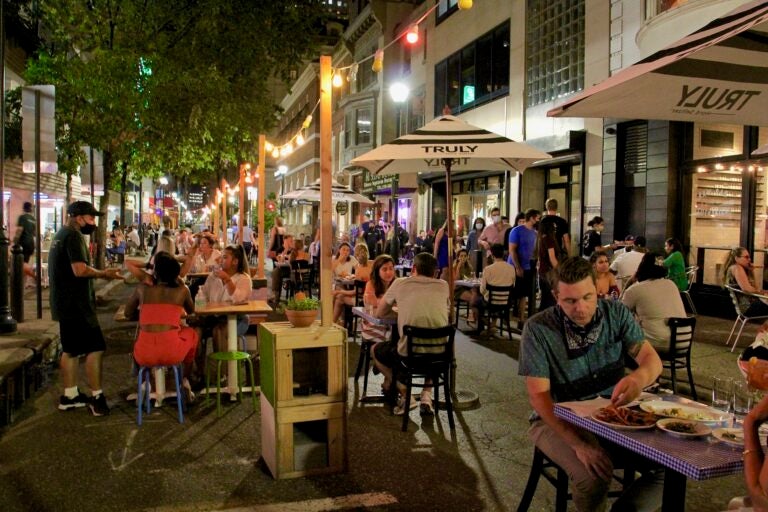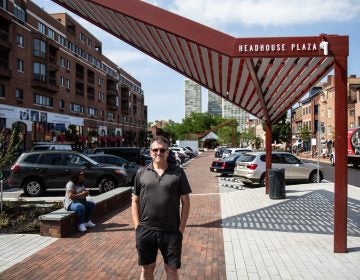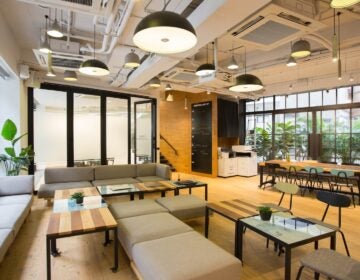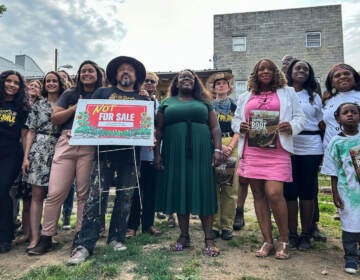Indoor dining is back, but let’s not forget the lessons of eating in the streets
Streeteries need to live on beyond the pandemic. When our government gave more space to restaurants, people discovered a more accessible city.
Listen 4:42
A block of Sansom Street in Center City is closed to traffic for outdoor dining. (Emma Lee/WHYY)
This story is part of Our Space, a collaboration between author Conrad Benner, PlanPhilly, and WHYY’s News and Information Community Exchange. Our goal: to talk with Philadelphians about the spaces we share.
If one thing has been constant for restaurants over the last year and a half, it’s change.
From lockdown life to takeout hustle, to the recent return of indoor dining, these businesses have gotten used to pivoting hard and fast.
One of those big shifts was the push into public streets for the streeteries legalized by the city last year. Instead of empty parked cars and traffic filling the lanes, we suddenly had streets with tables, chairs, and lots of joyful people eating, drinking, and having fun. If I’m honest, it was one of the more exciting transformations of Philly’s streets I’ve ever seen.
One huge benefit of the outdoor set-up is more space for people. And many Philadelphians don’t want things to go back to the cramped, less accessible normal.
One of those people is my friend Chrissie Murray. She uses a wheelchair and gets frustrated trying to navigate crowded dining rooms that aren’t really designed for her.
“It would be like, I’m sorry, can you like seven people please move so I can just nussle myself back there?” Murray recalls of the squeeze into indoor dining rooms.
Streeteries have changed that for her and other people who use wheelchairs or have other accessibility and mobility needs.
Elizabeth Clay uses crutches to walk. Before now, she endured a persistent personal obstacle course whenever she went out to enjoy a meal at a restaurant.
“I’ve always thought this isn’t enough clearance for someone who wants to come into this restaurant or wants to eat outside, who’s in a wheelchair or using a wheelchair,” Clay said.
She spent years advocating for more accessibility in the built environment before the pandemic unexpectedly revealed a new model.
“Restaurants having to keep their tables six feet apart really opened up opportunities for even just navigating a space, whether it’s indoor or outdoor,” Clay said.
Earlier this month, Philadelphia lifted social distancing requirements, allowing restaurants to revert back to pre-pandemic seating arrangements, but Clay says the increased accessibility options revealed during the pandemic could help restaurants build new relationships with people and communities that hadn’t felt welcome before.
She noted that one in five people in the U.S. identifies as having a disability. That’s a lot of people who might want to spend money at more restaurants in Philadelphia.
The disabled community is large and far from a monolith, so naturally there are many things to consider when working to make your restaurant more accessible. And not every outdoor dining situation works for everyone; sometimes the tables jut out into the sidewalks or intrude into the right-of-way, creating new problems. There are other issues to think about, too, from restroom accessibility to the availability of straws. But Elizabeth and others do hope on-street dining stays on past the pandemic — and they aren’t alone.
Daniel McLaughlin co-owns Mission Taqueria, which took advantage of the city’s pandemic-era relaxation of outdoor dining rules to turn the 1500 block of Sansom Street into a streetery.
“It’s better in every way,” McLaughlin said. ”It’s been great having these few blocks that are closed to vehicular traffic be like gathering points for visitors or for residents who live here.”
The big question is: Will expanded outdoor seating stay on after 2021?
City officials have said mostly good things about the streeteries and surprisingly, no one is complaining too loudly about the loss of parking. So far, it’s one of those rare city experiments that everyone — businesses, City Council, residents — seem to like.
“I would love for it to stay,” McLaughlin said. “But I don’t think the city has quite given us their blessing for anything beyond [this year].”
For Clay, the city’s decision to allow people to take over streets is about more than making diners happy. It’s about a more inclusive city.
“Restaurants know they can do it,” she said. “They know they can make these changes because they have done it over the last six months or a year, so quite frankly, there’s no excuse not to do it going forward.”
 WHYY is one of over 20 news organizations producing Broke in Philly, a collaborative reporting project on solutions to poverty and the city’s push towards economic justice. Follow us at @BrokeInPhilly.
WHYY is one of over 20 news organizations producing Broke in Philly, a collaborative reporting project on solutions to poverty and the city’s push towards economic justice. Follow us at @BrokeInPhilly.

Subscribe to PlanPhilly
WHYY is your source for fact-based, in-depth journalism and information. As a nonprofit organization, we rely on financial support from readers like you. Please give today.










